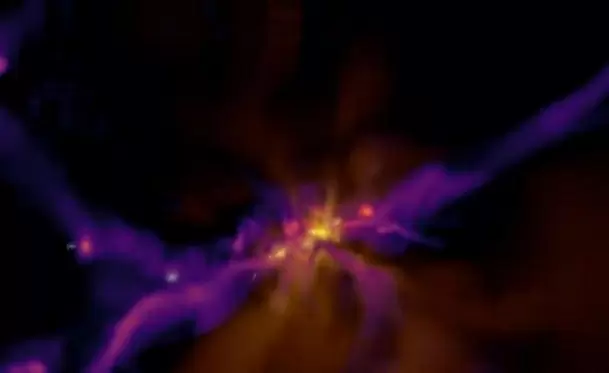Stars took birth 250 to 350 mn years after Big Bang: Study
London
25-June-2021

Photo: IANS
Stars formed for the first time 250 million to 350 million years after the beginning of the universe, according to a new study.
Analysing images from the Hubble and Spitzer Space Telescopes, the researchers calculated the age of these galaxies as ranging from 200 to 300 million years, allowing an estimate of when their stars first formed.
"Theorists speculate that the universe was a dark place for the first few hundred million years, before the first stars and galaxies formed," said lead author Nicolas Laporte from Cambridge.
"Our observations indicate that cosmic dawn occurred between 250 and 350 million years after the beginning of the universe, and, at the time of their formation, galaxies such as the ones we studied would have been sufficiently luminous," Laporte said.
The findings are detailed in the journal Monthly Notices of the Royal Astronomical Society.
The researchers analysed starlight from the galaxies as recorded by the Hubble and Spitzer, examining a marker in their energy distribution indicative of the presence of atomic hydrogen in their stellar atmospheres. This provides an estimate of the age of the stars they contain.
Watch This TWL Video
This hydrogen signature increases in strength as the stellar population ages but diminishes when the galaxy is older than a billion years. The age-dependence arises because the more massive stars that contribute to this signal burn their nuclear fuel more rapidly and therefore die first.
The researchers noted that NASA's James Webb Space Telescope, scheduled to launch in November, will be sensitive enough to observe the birth of galaxies directly.
"We now eagerly await the launch of the James Webb Space Telescope, which we believe has the capability to directly witness cosmic dawn," said Professor Richard Ellis from UCL's Physics and Astronomy department.
"The quest to see this important moment in the universe's history has been a holy grail in astronomy for decades. Since we are made of material processed in stars, this is in some sense the search for our own origins," he added.-IANS
More Headlines
Manglam Group Invests ₹1,000 Crore in Hospitality Expansion Across Rajasthan
Chai Kings Secures ₹24 Crore Series A Funding from AVT for Expansion
Amritsar Temple Blast: One Suspect Shot Dead, Another on the Run
Chennai Police Hunt Suspects After Brutal Kotturpuram Double Murder
Haryana BJP Leader Shot Dead Over Land Dispute On Holi: Police
Manglam Group Invests ₹1,000 Crore in Hospitality Expansion Across Rajasthan
Chai Kings Secures ₹24 Crore Series A Funding from AVT for Expansion
Amritsar Temple Blast: One Suspect Shot Dead, Another on the Run
Chennai Police Hunt Suspects After Brutal Kotturpuram Double Murder
Haryana BJP Leader Shot Dead Over Land Dispute On Holi: Police










